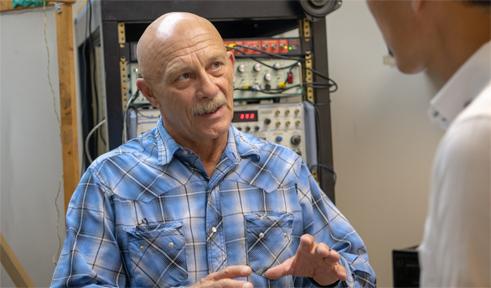
Recent News
Education
Ph.D., Brandeis University
Courses Taught
- BIOS 1710 Ecology, Evolution, and Animal Body Systems
- BIOS 2060 Drugs and the Brain
Research Interests
- Wilson Hall West 014
Our lab studies how animals generate rhythmic motor patterns (such as walking, swimming, and flying) experimentally and computationally at all levels from individual neurons to neural networks to muscle response to movement.
Representative Publications
C Gebehart, SL Hooper, A Büschges. (2022) Load non-linearly modulates movement reflex gain in an insect leg via a distributed network of identified nonspiking interneurons. Curr Biol 32:3847-3854.e3
R Rockenfeller, M Günther, SL Hooper. (2022) Muscle active force-length curve explained by an electrophysical model of interfilament radial spacing. Biophys J 121:1823-1855
C Guschlbauer, SL Hooper, C Mantziaris, A Schwarz, NS Szczecinski, A Büschges. (2022) Correlation between ranges of leg walking angles and of passive rest angles among leg types in stick insects. Curr Biol 32:2334-2403.e3
S Liessem, D Kowatschew, S Dippel, A Blanke, S Korsching, C Guschlbauer, SL Hooper, R Predel, A Büschges (2021) Neuromodulation can be simple: myoinhibitory peptide, contained in dedicated regulatory pathways, is the only neurally-mediated peptide modulator of stick insect leg muscle. J. Neurosci 41:2911–2929
A von Twickel, C Guschlbauer, SL Hooper, A Büschges (2019) Swing velocity profiles of small limbs can arise from transient passive torques of the antagonist muscle alone. Curr Biol 29:1-12
JB Thuma, SL Hooper (2018) Choline and NMDG directly reduce outward currents: reduced outward current when these substances replace Na + is alone not evidence of Na + -activated K + currents. J Neurophysiol 120:3217-3233
